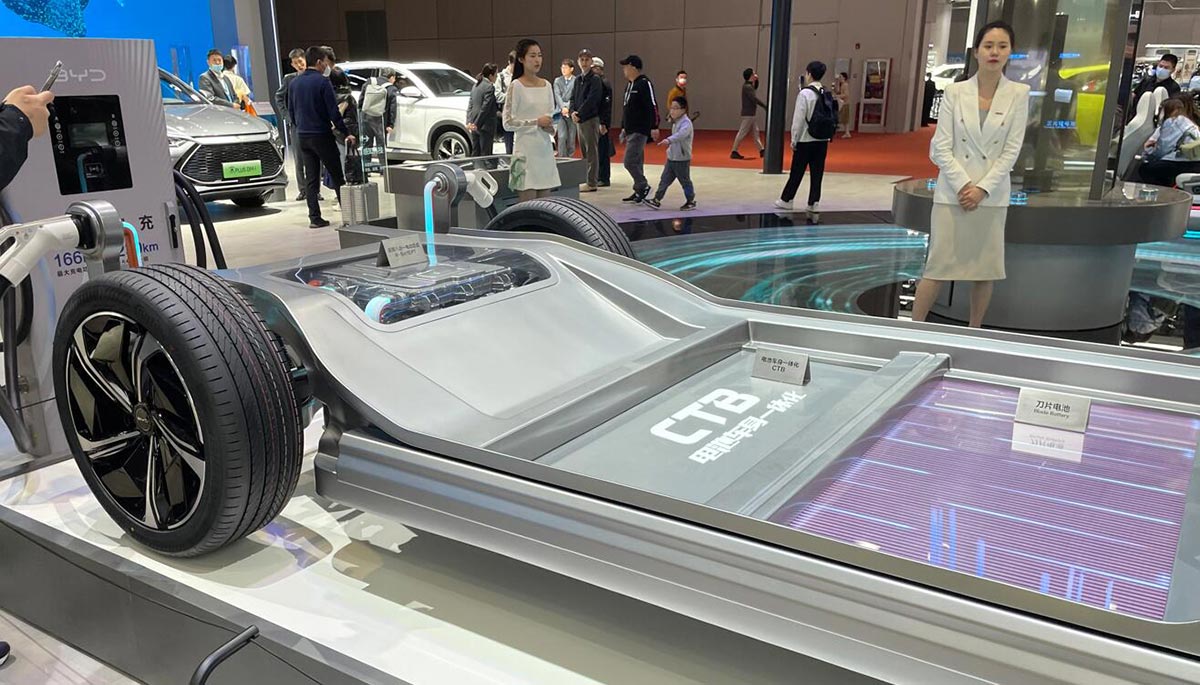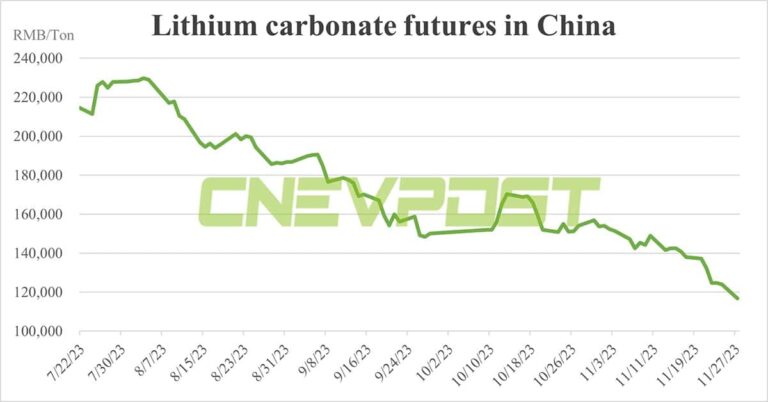The price war for power batteries is intensifying, with the world's two largest battery makers reportedly pushing battery costs down further.

(Image credit: CnEVPost)
As the price war for electric vehicles (EVs) continues, so does the price war for power batteries, with the world's largest battery makers reportedly pushing battery costs down further.
To secure its market position, CATL is sorting out production line resources and pushing for cost reductions, local media outlet 36kr said in a January 16 report, citing several industry chain sources.
CATL is marketing 173-Ah VDA-spec lithium iron phosphate (LFP) cells with 2.2C fast charging as standard to automakers, according to the report.
VDA is a size specification for square cells, with length, width and height of 148 mm, 26.5 mm and 91 mm, respectively. C refers to the charging multiplier of the battery, and 2C means that the battery can theoretically be fully charged in one-half hour.
The cells, which offer better performance without a price increase, are aimed at battery electric vehicles (BEVs) that sell for between 100,000 yuan ($13,900) and 200,000 yuan, the report said, citing an unnamed industry source.
Several automakers will switch to the CATL cell in mid-2024 at a price not exceeding RMB 0.4/Wh, according to the report.
"From the upstream layout and the resource reserve of the material system, only CATL can make 2C batteries lower to a price point at the moment," the source said.
Meanwhile, BYD's (OTCMKTS: BYDDF) battery unit FinDreams issued an internal notice urging its teams to continue to reduce costs, the report noted.
FinDreams maximized benefits in 2023 through means including tender bidding, but the scope for cost reduction in current procurement remains huge, the report said, citing the internal notice.
In 2024, FinDreams will continue to strengthen the management of non-productive materials and reduce costs, the notice said.
CATL and BYD are the two largest power battery makers, with the former having a global share of 37.4 percent in the January-November period and the latter at 15.7 percent, according to data released on January 9 by South Korean market researcher SNE Research.
As CATL and BYD cut prices further, smaller battery makers are poised to follow, and the cost of power batteries will be reduced further, the 36kr report noted.
Currently, VDA-sized LFP cells are selling for less than RMB 0.5/Wh. Leapmotor's vice president Cao Li recently said in an interview that the company's procurement cost for LFP cells has dropped to RMB 0.4/Wh, the report said.
The VDA size is a power battery size standard set by Germany, which can unify the specifications of power batteries and improve the flexibility of batteries in matching models. China's initial power battery specifications referred to the VDA standard.
With the exception of short blade cells, most square cells in China are VDA size, with ample production capacity and fierce price competition, 36kr's report noted.
The average price of square LFP cells at the same time last year was around RMB 0.8 to RMB 0.9 per Wh. By August 2023, that price was reduced to around RMB 0.6 per Wh.
Each RMB 0.1/Wh drop in the price of the battery cells means that a model equipped with a 60-kWh battery pack can save about RMB 6,000 in costs, the 36kr report noted.
Power batteries have gone from being in tight supply to being in oversupply in a year's time, and prices are now gradually dropping towards RMB 0.3/Wh, the report said.
Leapmotor evaluates battery suppliers' offers every month and lets the one with the lowest offer get the order as a way to gain bargaining power over costs, according to the report.
Leapmotor's Cao even believes that the price of battery cells could drop to RMB 0.32/Wh.
Some in the battery industry believe that price would leave battery makers with no profit, but in a competitive market, it is possible for them to gain market share at a loss, according to the report.
($1 = RMB 7.1911)

